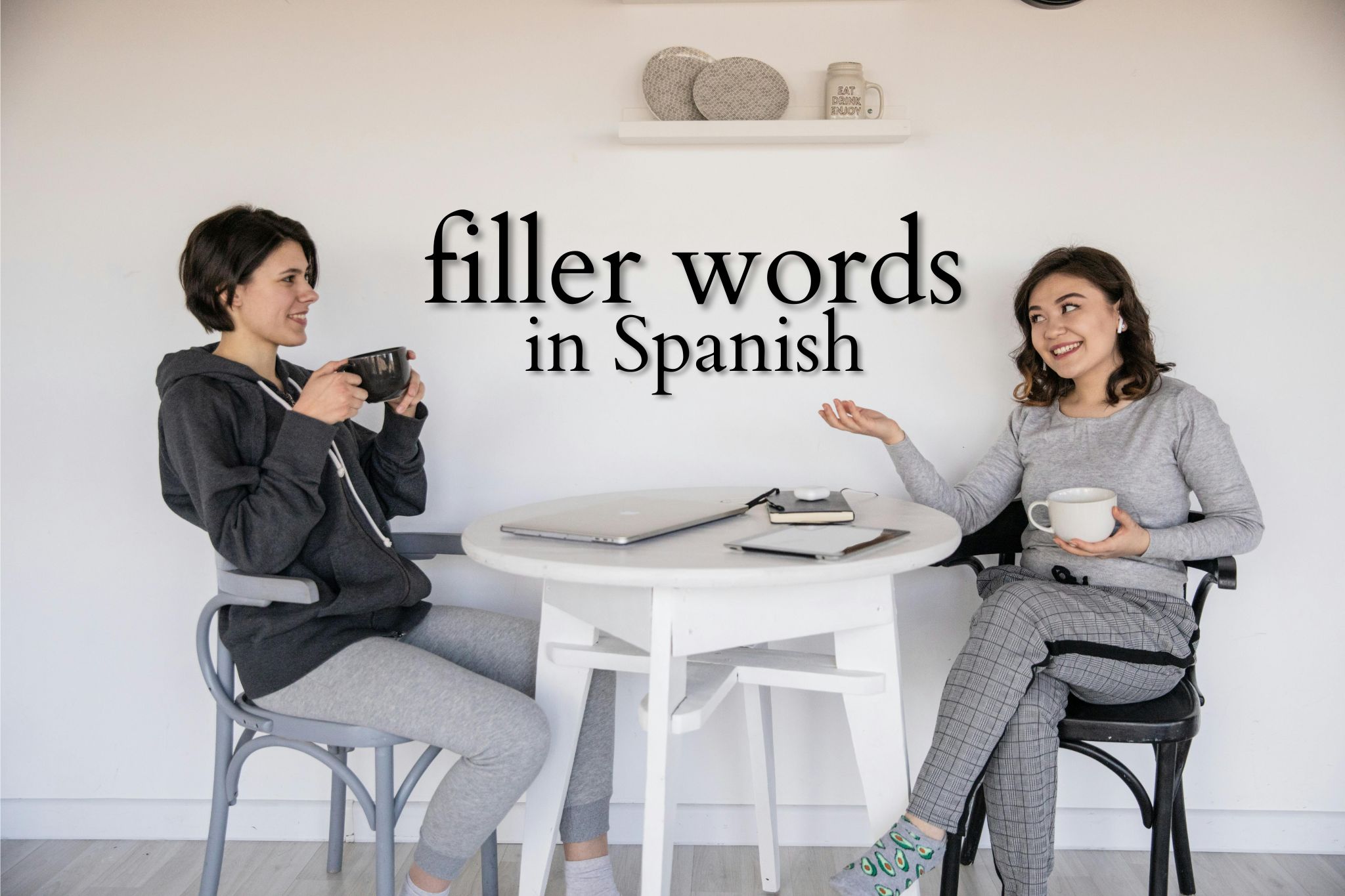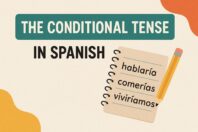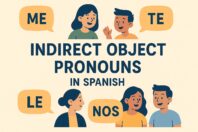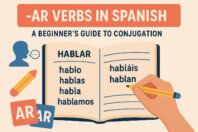Filler Words in Spanish: Essential Muletillas You Need to Know

Get our free email course, Shortcut to Conversational.
Have conversations faster, understand people when they speak fast, and other tested tips to learn faster.
More infoMaybe you’re wondering what are muletillas in Spanish or which are the most common filler words Spanish-speakers use. Today’s post will answer all those questions and more. So bear with us and you’ll learn all about filler words in Spanish.
We’ll begin by providing a clear definition of what we mean by muletilla and then explore when and how to use filler words in Spanish. We will organize the filler words according to their function and, as usual, we will provide numerous examples to ensure you have a thorough understanding of these muletillas.
What Are Muletillas or Filler Words in Spanish?
A muletilla is a term used to describe filler words or phrases that are used to fill pauses or gaps in speech. While these words or phrases lack substantial meaning, their purpose is to keep the conversation flowing smoothly and allow speakers a moment to gather their thoughts or express themselves more effectively.
Actually, muletilla in Spanish comes from muleta, which literally translates as crutch. Then, muletillas work as assistants of someone’s discourse, when in doubt, to buy time while thinking about something else, as well as some other uses that we’ll cover in our next sections.
Remember, filler words are totally normal when speaking Spanish, no matter how good you are at it. They actually make you sound more natural, especially in casual conversations. Plus, they help the people listening to you understand and process what you’re saying at the right speed, as long as you don’t use them too much. So, yeah, don’t stress about using filler words, they’re all good!
Filler Words in Spanish to Check Comprehension
¿Entiendes?
Do you understand?
Whenever you need to check that someone is with you, that he or she is understanding your point, ¿Entiendes? works perfectly. The verb entender here can be conjugated in simple present according to your audience, one single person or many people.
- We’ve got many things to do for tomorrow, do you understand? – Tenemos muchas cosas que hacer para mañana, ¿entiendes?
¿Me explico?
Am I clear?
This muletilla can also be translated as the typical filler Do you know what I mean? in English.
- You’re going to turn right on the next traffic light, am I clear? – Vas a doblar a la derecha en el próximo semáforo, ¿me explico?
¿Ves?
You see?
¿Ves? is used just as we use you see in English, conveying the metaphorical meaning to understand.
- If we add even numbers with odd numbers, we get this result, you see? – Si sumamos los números pares con los impares, obtenemos este resultado ¿ves?
Filler Words in Spanish to Clarify and Emphasize
Así que
So
Así que is used to make things clear by linking two ideas. One of them is the consequence of another.
- Her agenda was too busy, so she couldn’t take the day off. – Tenía la agenda muy ocupada, así que no pudo tomarse el día.
Sometimes it can also be used at the end of a phrase, to imply a consequence in an unfinished sentence.
- I came alone, Pedro had a lot of work, so… – Vine sola, Pedro tenía mucho trabajo, así que…
Por eso
That’s why
This filler phrase is used to link ideas or support something previously stated, emphasizing its meaning.
- I love traveling, that’s why I always plan my vacations in advance. – Me encanta viajar, por eso siempre planeo mis vacaciones con anticipación.
Entonces
Then, So
Entonces can be used as a filler word in Spanish to clarify a statement or make ideas more straightforward. It serves as a transitional word that helps connect different parts of a conversation, providing a sense of coherence and clarity.
- You don’t eat meat so, what do you eat? – No comes carne, entonces ¿qué comes?
O sea
That is
This muletilla is normally used whenever we need to make ideas clearer or we need to rephrase a sentence for the sake of emphasis.
- The music and the food of that restaurant was good, that is, I liked it all. – La música y la comida estuvo muy buena, o sea, me gustó todo.
Filler Words in Spanish to Fill Pauses in Conversation and to Gain Time
Eh
Hmm
This muletilla is not even an actual word. We use it to gain time to think about our next phrase or restructure what we were saying.
- Hmm… in other words, I think that’s fair enough. – Eh… en otras palabras, creo que es bastante justo.
Pues
Well
Pues is one of the most popular filler words in Spanish used by native speakers. Pues can be translated as well, anyways, so, umm and then.
- Well, as I was telling you. – Pues, como te estaba diciendo.
- Ah, ok, umm… we better go out now. – Ah, sí, pues… mejor que salgamos ahora.
Apart from being a filler word, Pues can work as an adverb and as a conjunction. If you want to know more about Pues, check out our dedicated post on how to use pues in Spanish.
Este
Hmm, Say
This filler word is normally used when we have lost our train of thought and we clearly need time to rearrange our ideas before saying them.
- At the end of the day, what do you want to do? – A final de cuentas, ¿qué quieres hacer?
Hmm, I don’t know. – Este, no sé.
¿Qué te iba a decir?
What was I going to say?
Whenever you need to buy some time, this is a great phrase!
- What was I going to say? Ah, yes, shall we go to the cinema tomorrow? – ¿Qué te iba a decir? Ah, sí, ¿vamos al cine mañana?
Digo
I mean
Whenever you realize that you said something wrong and need time to think and correct your mistake, digo is your life-saver filler word in Spanish.
- The meeting is at 8 am, I mean, at 8.30 am. – La reunión es a las 8 a. m., digo, a las 8:30 a. m.
Bueno
Well
Bueno can be used almost interchangeably with Pues. Bueno at the beginning of the sentence indicates that you’re taking your time before speaking.
- Well, let’s start with the class, then. – Bueno, vamos a empezar con la clase, entonces.
Other than being a filler, Bueno, can also function as an adjective. For a deeper explanation of Bueno, check out our post on when to use bueno in Spanish.
Filler Words in Spanish to Address Other Speakers
Mira
Look
If what you need is to call someone’s attention while having a conversation, Mira is the best filler word to do that. It serves to grab the listener’s attention or emphasize a point.
- Look, I think we can do that tonight. – Mira, creo que sí podremos hacerlo esta noche.
Escucha
Listen
Escucha functions pretty much like Mira. It’s used to draw the listener’s attention. It serves as a signal to direct the listener’s awareness towards a specific point or statement.
- Listen, now you only have to sign here – Escucha, ahora solo tienes que firmar aquí.
Fíjate
You see
Fíjate is another filler word in Spanish that can be used to draw the attention of another speaker or to keep them engaged in the conversation. It can also be translated as pay attention or take note in English. Similar to Escucha and Mira, Fíjate serves as a verbal cue to prompt the listener to focus on what is being said.
- You see, I didn’t think you’ll be able to do it. But you did it. – Fíjate, no creí que lo lograrías. Pero lo hiciste.
In case you haven’t noticed, let us tell you that these three verbs that we’ve just mentioned are all conjugated in the imperative mood. For a refresher on imperative, read our article on imperative mood in Spanish.
Filler Words in Spanish to Agree or React
Vale
Ok
This filler word in Spanish is used to give an answer and to agree with someone. It’s widely used in many Spanish-speaking countries, especially in Spain. It’s normally used anywhere in a conversation or just to fill in some space. It’s even used repeatedly Vale, vale.
- Yes, ok, ok, I understand what you mean. – Sí, vale, vale entiendo lo que quieres decir.
Ya
You may be aware that the word ya can be translated as now or already, but it also serves as a versatile filler word in Spanish. In addition to its temporal meanings, ya can be used to indicate agreement, similar to the Spanish word vale, and the English word yeah.
- The president’s speech was wonderful. – El discurso del presidente fue maravilloso.
Ya, estoy totalmente de acuerdo. – Yeah, I totally agree.
Claro
Sure
Claro is a filler word that can also be translated as right or of course. It’s a natural way of reacting to what someone else has said and showing agreement at the same time.
- You tell me when the package arrives, ok? – Me avisas cuando llegue el paquete, ¿sí?
Sure, I’ll let you know. – Claro, te aviso.
If you’re wondering about other ways of showing agreement informally in Spanish, check out our post on expressions for OK in Spanish.
Conclusion
So far so good! We’ve seen that filler words in Spanish are an essential part of the language, just like happens in any language. Getting to know them and mastering them will make you sound more fluent and more natural.
In today’s post, we’ve shown you different functions and everyday situations where muletillas can be easily said. Filler words are more than useful to buy some time while speaking, checking that another speaker understands what you’re saying, to call someone’s attention and even to show agreement.
We’re sure that this post will come in really handy if you want to have a fluent and nice informal conversation with anyone in Spanish. We’ve given you all the details about filler words in Spanish and we bet you’ll make the best out of it!



